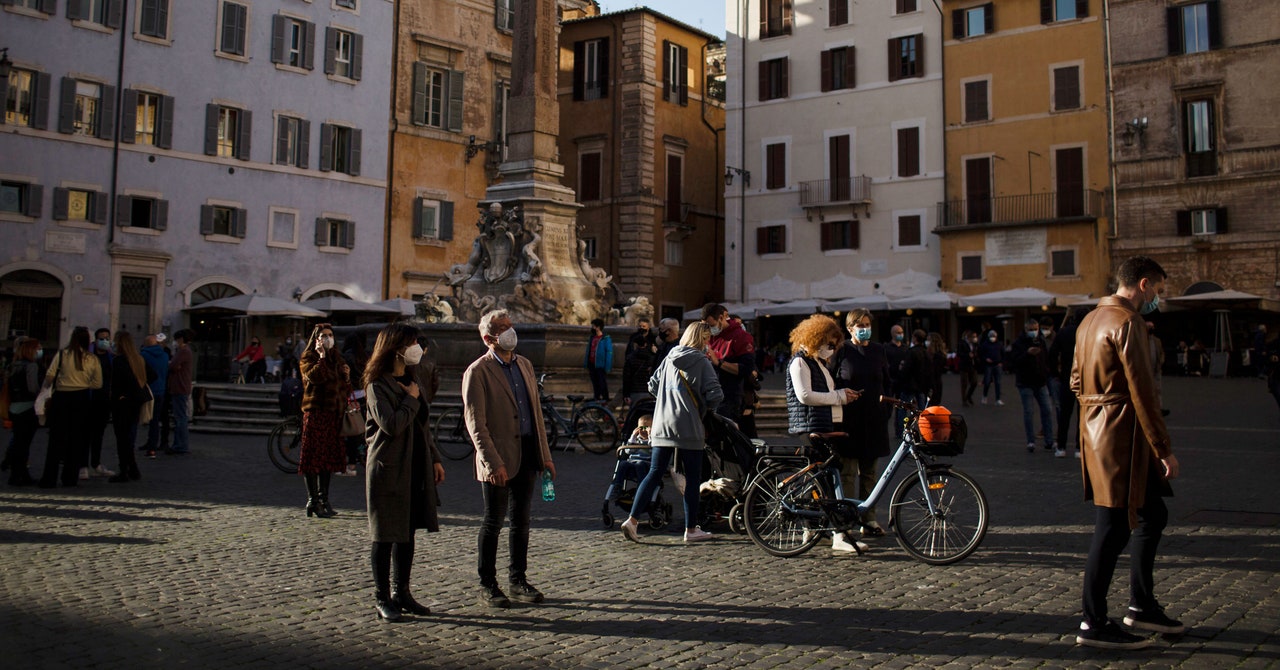
“I don’t see any motive, but I think they’re not independent of each other,” says Rambaut. “Because once this idea has caught hold, people then will go through their stored samples to see what they can find.”
Other studies reporting an earlier detection of the virus in Italy have similar flaws. A study published in August 2020, conducted by Rome’s Department of Environment and Health, reported detecting Sars-CoV-2 RNA in sewage samples taken on December 18, 2019, in the cities of Milan and Turin. These findings raised the suspicions of Alex Crits-Christoph, a postdoc at Johns Hopkins University who specializes in bioinformatic studies of genetic data. The researchers ran three different tests, but only one came back positive. They also devised their own primers, which are used to target specific regions of RNA, despite there being standardized primers for Sars-CoV-2 in use across the world at the time. “That strikes me as a little bit odd,” he says.
On October 28, 2020, a study was submitted to the journal Tumori and was accepted the very next day, “which is indicative of, at the very least, a very rushed peer review—maybe even no peer review,” says Worobey. The researchers looked at the antibodies of volunteers enrolled in a lung cancer screening trial, recruited from all Italian regions, and found that over a hundred of the participants had developed coronavirus antibodies as far back as September 2019. “Our results indicate that Sars-CoV-2 circulated in Italy earlier than the first official Covid-19 cases were diagnosed in Lombardy, even long before the first official reports from the Chinese authorities, casting new light on the onset and spread of the Covid-19 pandemic,” the authors wrote. They theorized in interviews that they might have detected a “less transmissible” strain that could circulate without sparking a major outbreak. The paper was widely covered by English-speaking media. But others have pointed out major flaws in the paper. The researchers didn’t take the necessary measures to prevent the detection of other coronavirus antibodies, such as the common cold. “Any antibody test has its false positives, so when you screen a group of individuals in a very low prevalence situation, the majority of positives are going to be false,” says Marion Koopmans, a virologist at Erasmus Medical Center who was part of a WHO team that traveled to Wuhan to investigate the start of the coronavirus pandemic. The study was declared under investigation in March 2021 by the journal, but no corrections were ever made. The WHO requested the samples be retested at other labs. The investigation found that none of the samples contained high enough levels of antibodies to be considered proof of infection.
Another study looked at a skin biopsy from a 25-year-old woman living in Milan taken on November 10, when she came to the hospital suffering from a rash. On closer inspection months later, Raffaele Gianotti, the lead researcher and dermatologist who treated her, found evidence of Sars-CoV-2 molecules in her skin sample. The WHO wanted to investigate the case, but now nobody can locate the female patient, and Gianotti died in March. (The remaining authors on the paper say there is no update on the case.)
Rambaut says these findings “are being used by various parties to support a particular set of narratives.” In particular, they have been covered frequently by Chinese state media, spinning the studies to suggest that China was not the country of origin for the virus. “Wuhan was where the coronavirus was first detected, but it was not where it originated,” said Zeng Guang, formerly a chief epidemiologist at the Chinese Centre for Disease Control and Prevention, at an academic conference in November 2020.


